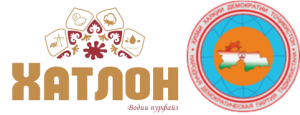Mu’minobod
MUMINOBOD – A PICTURESQUE CORNER OF THE COUNTRY
A brief historical information. Having ancient history and culture, first mention of Muminobod’s name as a city, according to historical sources, is seen in the book titled «History of Badakhshan» which dates back to the end of 11th century. Due to this, it appears that Muminobod was recognized as a city back in the 10th century. Finally, in 1930 Muminobod was officially established as a district in Tajikistan, and its locals have been contributing to the prosperity of their homeland up to our days. From ancient times to our days people of this land have been occupied in agriculture, farming, and gardening. The district has more that 100 items of historical monuments, holy sites, and places worth seeing.
Discovery of a citadel named “Qalaai Muminobod” in the territory of today’s «Ismoili Somoni» street evidences that Muminobod district is an ancient land.
The territory of the district comprises of 880,6 square kilometers and is a home to Tajiks as well as to representatives of other nations, particularly, Russians and Uzbeks. During the years of independence major changes have taken place in various fields of economy, industry and culture. The district has changed its appearance in an unimagined way. Muminobod is divided into 7 rural communities, which are a home to a population of more than 90 000 people.
Attractive travelling areas. There are plenty of attractive and worth-to-see sites in Muminobod for tourists and guests, among which the most popular ones are: “Forty Maidens“ (Chil dukhtaron) mountain, citadel of Muminobod, tomb of “Silent Shah” (Shohi Khomush) located in Langar village, treasure house of literary criticism of Sohib Tabarov located in the center of the district, House of Secret of Meaning located in the village of Kulchashma, Monument of Ismail Samani and others. Due to its mild climate, Muminobod’s gardens and forests present the locals with bountiful harvests of various sugary fruits, like apples, pears, apricots, crab cherries, mulberries, grapes and as well as walnuts. Fruits and vegetables of this land are well known and popular all over the country, which shall be much liked by ecotourists.
Infrastructure service. Muminobod district provides a supportive environment for services rendered to local and international tourists. Particularly, kiosks selling various goods are found in all of the villages and neighborhoods. A big central market is available to serve the needs of the locals and guests of the district. Merchants in these markets and shops mostly sell garments, food, agricultural products and other goods of mass consumption.
In terms of medical service standards, the district also satisfies modern demands. Total number of healthcare facilities in the towns and villages of the Muminobod is 29, which includes, 20 rural healthcare centers, 9 healthcare institutions subordinate to executive body of the state government of the Muminobod district. At the same time there are 10 drug stores available in the territory of the district, all of which employ specialists certified by the Ministry of Health and Social Protection of Population of the Republic of Tajikistan.
It should also be mentioned that Muminobod district has 35 cultural institutions, including a Palace of culture, a rural House of culture, a Mobile club, a folk theater, a children’s musical school, the treasure house of literary criticism of S.Tabarov, a central library, a children’s library, and a rural library, all serving the needs of the local people.
Apart from that, Muminobod has 3 public bathrooms, one swimming pool and a sports complex.
A hotel named Khobi Shirin serves the guests of the district in Muminobod. The hotel has 10 rooms and is located in the center of the district.
Folk craftsmanship and skills. From ancient times Muminobod district’s men and women are famous for being talented at embroidering, housekeeping, crafting and other workmanship. Muminobod’s today’s population are also occupied with various traditional legacy and modern crafts, like weaving (socks weaving, carpet weaving), sewing (chakan sewing, snip sewing, toki (traditional head wear) sewing, pattern sewing, veil sewing, sewing with gold threads, sheroz sewing, wooden plate carving, cradle making, tandoor constructing, blacksmith’s work, gold-work and many more. Also, Muminobod women are known to cook the local dishes, like: qalama, oshi burida, palav, umoch, oshi tuppa, qurutob, mantoo, shirbat, shir birinj, shir ravghan, shakarob and others with utmost talent.
The particularities of the district. The district is famous, both inside and outside Khatlon region, for its especially clean air and natural lakes and reservoirs for swimming and boating sports. Flowers and vulnerary plants from mountains and hills are collected here, and medications are prepared from them in a local manufactory named Shifo, and are used as remedies by people all over the country. About the beautiful natural mountain chains named Chil dukhtaron, which have special splendor and magnificence, several legends are told, and it is also known as the site, where the tragic scene of “Rostam and Sohrab’s battl” from Ferdowsi ’s epic Shah-namewas filmed.
Search
Archives
